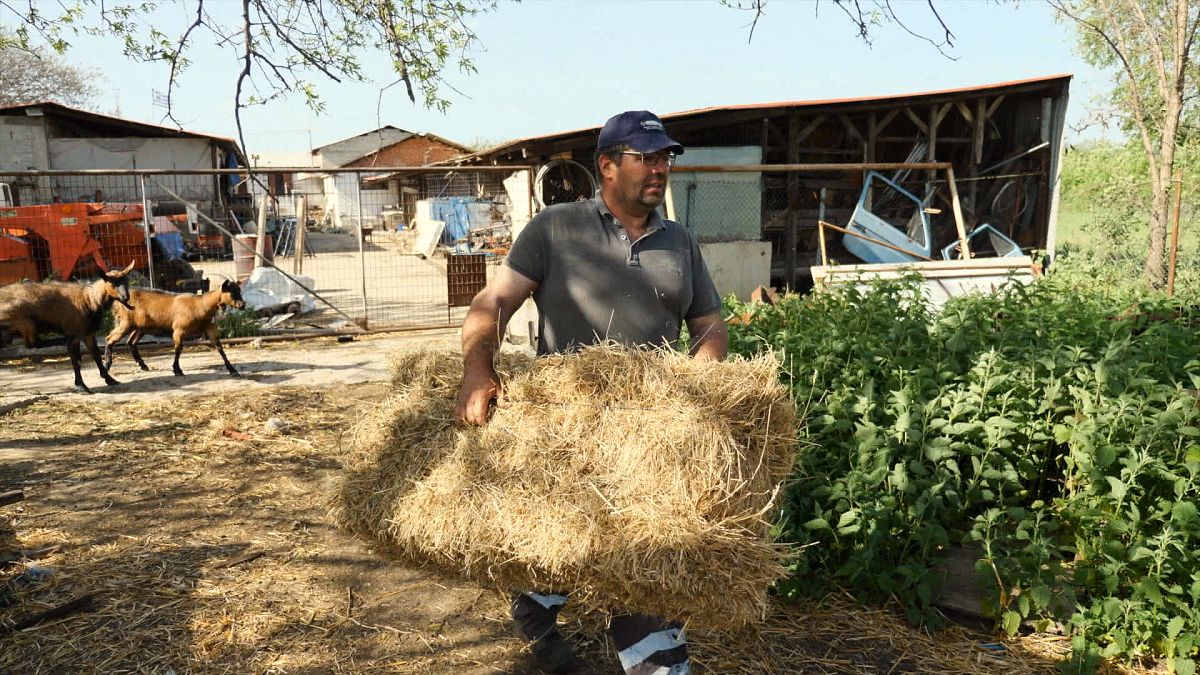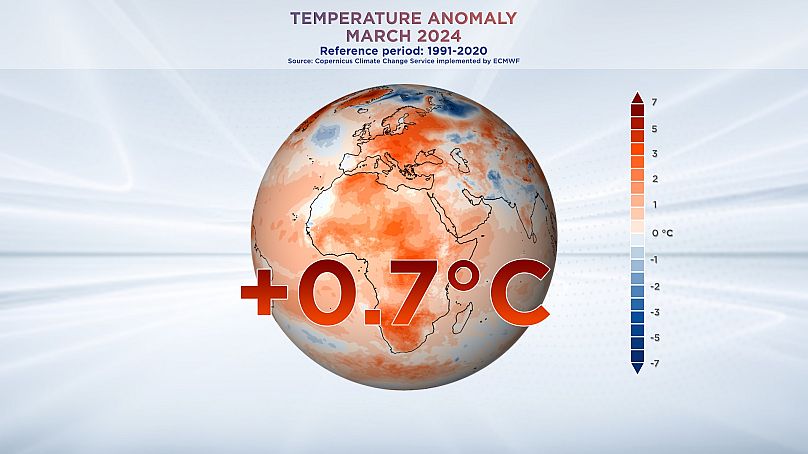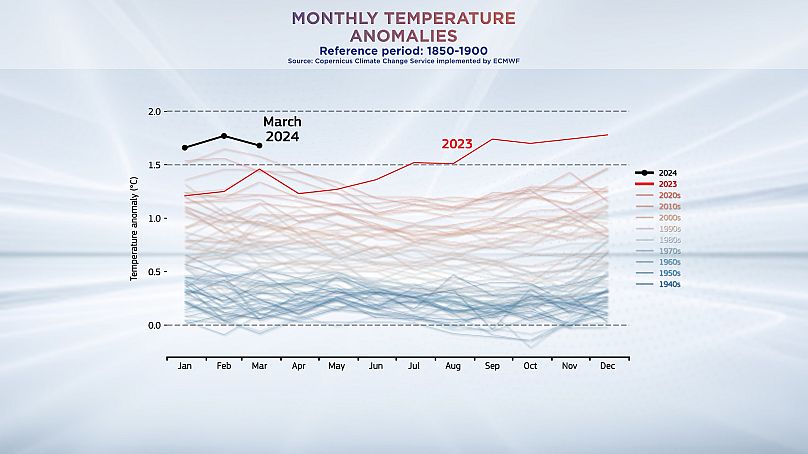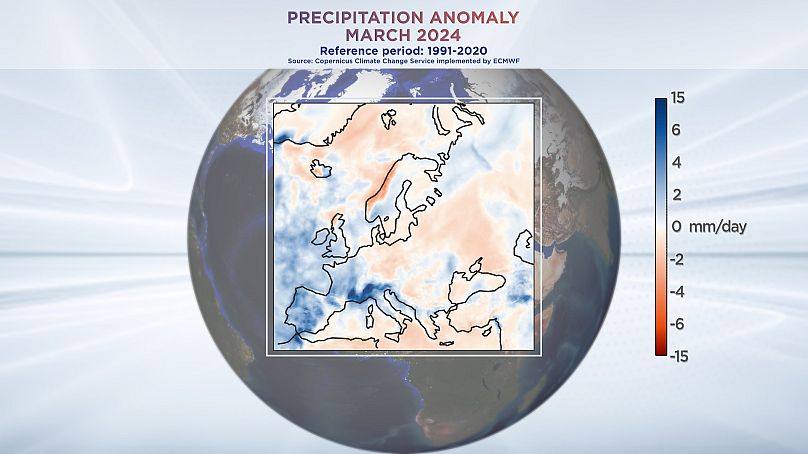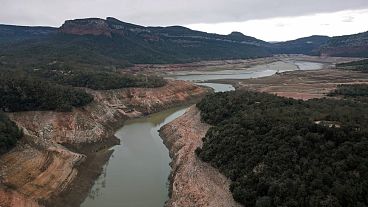From tourist guides to farmers, millions of employees have to work outdoors, even in a heatwave. What's happening inside our bodies, and what health dangers do we face?
This month in Climate Now we travel to Greece to meet scientists investigating the risks of extreme heat in the workplace.
It comes as the Copernicus Climate Change Service published its latest data, indicating that March 2024 was the warmest March on record on a global level, with temperatures 0.7 degrees Celsius above the 1991-2020 average, and 2.2 degrees above average in Europe.
Germany and the Netherlands had their warmest March since records began, and it was much warmer than average over the eastern United States and Canada. Meanwhile, parts of California were unusually cold and snowy. Sea surface temperatures worldwide continue to be at record levels in the non-polar zones.
The Copernicus graph of air temperature anomalies since the 1940s shows how the first three months of 2024 were over 1.5 degrees warmer than the pre-industrial average. The data for March now means that we have had 10 months in a row with record temperatures for the time of year.
The growing problem of heat stress
Many workers worldwide are now facing the issue of heat stress in the workplace. In the past, the issue was associated with construction workers and manual labourers, but today research shows that a broad range of the population is concerned, from journalists and insurance inspectors to summer theatre staff and tour guides.
Androniki Miliou offers tours around the world heritage site of Meteora in central Greece, and she tells Euronews that in the summer months the temperatures can be difficult to bear: "A lot of times we have 35 degrees Celsius and above, so that's quite difficult. Many times, we have to wait a long time on the stairs to climb up to a monastery, and that doesn't help us, or other people, to cope."
On the hottest days, she loses out on income, too: "When the heat is unbearable often the archaeological sites are closed because neither we nor the people can cope," she says.
What's happening inside our bodies when we get too hot?
In the town of Trikala, at the University of Thessaly, a research group led by Professor Andreas Flouris is studying the effects of heat on the body in the workplace. Professor Flouris is part of a major effort in Greece to raise awareness about the heat stress issue, which has even led to the national weather service publishing what's known as the WBGT temperature online, an indicator of how hot it feels based on radiation, temperature and humidity.
We met him while he was studying farmer Athanasios Peristeris, fitting him with sensors to measure his energy use, and the temperature outside and inside his body.
"On one hand, we need to know how his outer body - we call it the shell - feels, but also the core body, which is really important for brain temperature," says Professor Flouris.
The next step is to perform heavy manual labour in this chamber, which is warmed to heatwave conditions, with lights to simulate sunshine. As Peristeris works, 85% of his energy turns to heat, warming up his body, including his brain.
"While he's doing this kind of work, his core temperature is rising. And if it rises beyond 39-39.5 degrees Celsius, his brain temperature will start affecting how his nervous system works. At some point, your brain will collapse, and this will result in a condition that can even lead to death, which is what we call heatstroke," explains Professor Flouris.
His research is showing that the brain and nerves are the most sensitive parts of our body to heat: "It's not our kidneys, it's not our lungs, it's not our heart - although these are also affected - but the central nervous system is the one that first breaks down."
When he's working in the summertime, Peristeris avoids the warmest times of the day. However he tells us that the heat can make him feel unwell sometimes.
"The sensation that I feel from the heat is discomfort, chest pain, something like weight here in the front, and difficulty breathing," he says.
Such symptoms are the first sign of trouble. When the brain and body is too warm, workers should stop, rest, drink water, and seek shade. Doing so will preserve their health, and preserve their productivity, too, according to Professor Flouris.
"One very important issue to understand is that heat is a lose-lose situation. Both the workers are losing their health, but also the employers are losing a lot of bottom line, a lot of financial benefits, because of the losses in productivity."
"But we've seen that with simple and practical solutions you don't lose any productivity. In fact, you gain productivity instead of losing it," he concludes.
